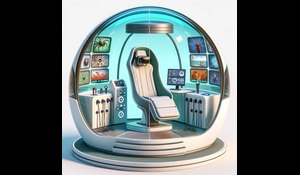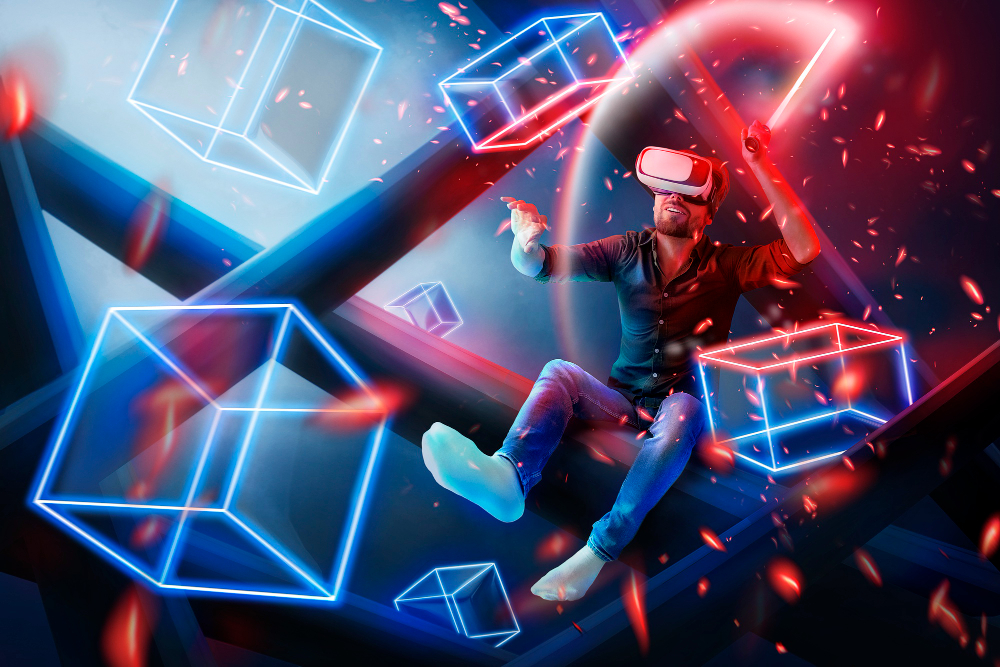Beyond Realities: The Synergy of Virtual Reality and Artificial Intelligence
In the ever-evolving landscape of technology, two transformative forces are converging to create a future that transcends our current understanding...
2 min read
 Nerdle
:
Feb 29, 2024 4:46:07 PM
Nerdle
:
Feb 29, 2024 4:46:07 PM

Virtual Reality (VR) and Augmented Reality (AR) technologies have been making significant strides in various fields, including healthcare and therapeutic practices. One of the most promising applications of these technologies is in the treatment of phobias, a type of anxiety disorder characterized by an intense and irrational fear of specific situations, activities, or objects. This blog post explores how IT, VR, and AR are revolutionizing therapy for phobias, offering new hope to those affected.
Phobias go beyond typical fears; they can be debilitating, preventing individuals from leading normal lives. Traditional treatments include cognitive-behavioral therapy (CBT) and exposure therapy, where patients are gradually exposed to their fear in a controlled environment. However, these methods have limitations, including the difficulty of creating real-life exposure scenarios and the intense anxiety they can provoke.
VR and AR technologies have emerged as powerful tools in phobia treatment, offering immersive experiences that are not possible through traditional methods. Here’s how they are changing the landscape:
VR and AR allow for controlled exposure to the source of fear in a safe environment. Patients can experience their phobias in a virtual space, where the intensity and duration of exposure can be precisely managed. This controlled setting reduces the risk of overwhelming the patient while providing a realistic experience.
These technologies facilitate gradual desensitization, a process where the patient is exposed to increasing levels of their fear. For example, someone with a fear of heights might start by standing on a virtual balcony a few stories high, gradually moving to higher and more challenging scenarios as they become more comfortable.
One of the advantages of VR and AR is the ability to create customized scenarios tailored to the specific fears of each patient. This level of personalization ensures that the therapy is relevant and effective, enhancing the treatment's success rate.
Therapists can monitor patients' reactions in real-time during VR or AR sessions, allowing for immediate adjustment of the scenario based on the patient's responses. This flexibility is crucial for maintaining the right balance between challenging the patient and ensuring they are not overwhelmed.
The integration of VR and AR into phobia treatment offers numerous benefits, including increased accessibility, reduced costs compared to real-life exposure scenarios, and the potential for remote therapy sessions. However, challenges remain, such as the need for further research to standardize protocols, the cost of VR and AR equipment, and the need to train therapists in these new technologies.
As technology advances, the potential for VR and AR in treating phobias and other mental health conditions continues to expand. Future developments may include more sophisticated simulation technologies, better integration with existing therapeutic practices, and increased accessibility for patients and therapists alike.
The application of IT, VR, and AR in treating phobias represents a significant advancement in psychotherapy. By providing safe, controlled, and customizable exposure experiences, these technologies offer a promising alternative to traditional treatment methods. VRenity is building solutions that will assist individuals with a variety of different experiences that will allow for a positive and healthy life. As research continues and technology evolves, VR and AR stand to play a pivotal role in overcoming phobias and transforming the lives of those affected by these challenging conditions.

In the ever-evolving landscape of technology, two transformative forces are converging to create a future that transcends our current understanding...

In the ever-evolving landscape of technology, augmented reality (AR) has emerged as a revolutionary force, transcending the boundaries between the...
.jpg)
A recent study published in Applied Sciences explores the potential of a novel virtual reality (VR) method for reducing anxiety and inducing...